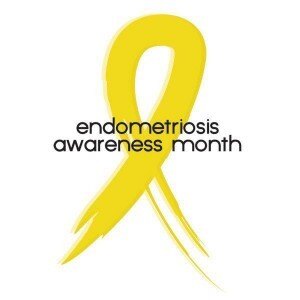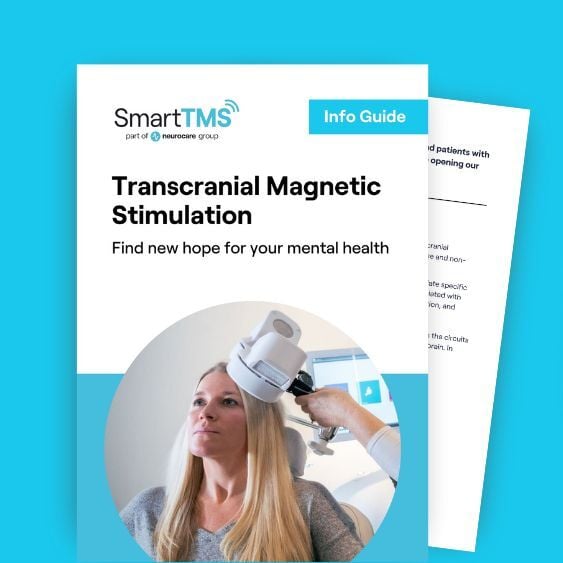Endometriosis and Mental Health | Smart TMS
March 24, 2020 - Smart TMS

March is endometriosis awareness month
This is a topic I feel strongly about, as in 2015 I was diagnosed with endometriosis (or ‘endo’) by exploratory laparoscopic surgery. This diagnosis finally came after years of unexplained excruciating abdominal pain, widespread chronic pain, excessive bleeding, fatigue and extreme nausea/sickness after eating. After multiple negative tests, scans and -oscopies (and one doctor actually saying; ‘what do you expect me to do about it?’), a friend mentioned that my symptoms sounded similar to their relative’s, who had endometriosis. At the time, I was like ‘endo-what?’, having never heard of the condition until that point. Now, however, the word is well ingrained into my vocabulary. Three excision surgeries later – in one of which, multiple of my organs had to be separated from one another – it is still exceptionally rare that I have a pain-free day.
Despite 1.5 million women (and those assigned female at birth) being affected by endo in the UK, there is a distinct lack of awareness of the condition.

What is endometriosis?
Endometriosis is a condition where cells that behave like the endometrium (consisting of gland, blood cells and connective tissue), which are usually lining the womb, are found outside the uterus. During the monthly cycle, hormones stimulate these cells causing them to grow, then break down and bleed. This internal bleeding has no way of leaving the body, which leads to inflammation, pain, and the formation of adhesions (scar tissue) that can lead to organs becoming stuck together. Typically, the ovaries, fallopian tubes, bladder, colon and pouch of Douglas are affected, but in rare cases endo can spread to other areas of the body, such as the lungs, heart, eyes and brain. Symptoms vary from person to person and can include:
- Infertility or difficulty getting pregnant
- Pelvic pain that worsens during period
- Painful abdominal bloating
- Nausea
- Heavy periods and irregular bleeding
- Fatigue
- Pelvic masses
- Sciatica
- Back pain
- Dyspareunia
- Pain during urination
- Digestive problems
How is endometriosis diagnosed and treated?
The only way to confirm endometriosis is by diagnostic laparoscopy – unfortunately, there is not a non-invasive way to diagnose endo. However, many people have various other tests before surgical diagnosis including allergy tests, pelvic exams, ultrasounds and MRIs. Although these can’t diagnose endo, they rule out alternative causes for the symptoms, and can detect indicators associated with the condition, such as cysts.
There is no cure for endo so, rather than being treated, the condition can be ‘managed’. Current treatments usually focus on masking the pain (palliation) which typically involves suppression of ovarian function. Surgical excision or ablation is used as an attempt to preserve fertility. It is a misconception that a hysterectomy and removal of the ovaries is a definitive treatment for endometriosis – although it would be beneficial in some cases, there is still chance of symptom recurrence after the hysterectomy, and early menopause can also carry risk. A highly skilled endometriosis surgeon is required to ensure the best chance of recovery with complete and thorough removal of endometriosis tissue via excision – not every gynaecological surgeon has the correct expertise for this.
How does endometriosis impact on mental health?
Living with endometriosis – or for that matter, any illness or chronic pain condition – takes a toll on mental health as well as physical health. A BBC survey found that over 50% of those suffering from the condition had suicidal thoughts, many rely on addictive painkillers, and the majority said it had badly affected their relationships, education and career. Having endo can make you more likely to have mental health disorders such as anxiety and depression.
Endo can have a really negative impact on an individual’s quality of life – for some, the pain can be so debilitating that they are no longer able to work. Even for those who still manage to work, working in constant pain is exhausting and often leaves little energy left for social engagements. There is a real impact of not knowing how you are going to feel from day to day – making plans is difficult and the pain can lead to isolation and loneliness.
On average, it takes 7.5 years to receive a diagnosis for endo – this delay is particularly concerning, as endo is a progressive disease, meaning that symptoms can worsen if left untreated. It is often the case that women are made to feel like doctors do not believe the severity of their symptoms and feel that they are exaggerating, or simply have an inability to tolerate period pain. The experience of not being believed by doctors or even friends and family members. Being told that the pain is ‘all in your head’ is incredibly frustrating and can lead to self-doubt and a lack of confidence. The absence of understanding or even validation of your pain inevitably causes a sense of hopelessness and can cause people to feel that they have no available treatment options.
There is a stigma surrounding endometriosis, as it is associated with menstruation, so it is often seen as an uncomfortable topic and can be considered an embarrassing subject to discuss. This, along with the normalisation of women’s pain, can lead to the dismissal of symptoms and create a reluctance to discuss symptoms and seek help. This means that many people are dealing with such a devastating amount of pain that they are keeping to themselves, which has a definite negative impact on an individual’s mental health.
What support is available for people with endometriosis?
Support groups exist online – I am in a number of endo support Facebook groups. These can be very helpful, as talking to people who are going through the same thing enables you to feel that you are not alone. Hearing about the experiences of people who know how you feel, and who are facing the same challenges as you, is a great source of emotional support.
There are also endometriosis education groups, for example ‘Nancy’s Nook’ which aims to inform members about their condition. Knowledge of your condition can empower you to self-advocate, get second opinions and question the suggestions that doctors are making for your treatment.
Endometriosis UK offers a helpline run by trained volunteers who have personal experience of endo. This can be reached on 0808 808 2227, the opening times change day-to-day, and can be found on their website: https://endometriosis-uk.org/helpline
Endometriosis UK also have an ‘endometriosis friendly employer’ scheme, where employers have the option to sign up and commit to raising awareness and making practical adaptations to make the workplace more accessible. Employers involved in the scheme are listed on the website.
How can I support someone with endometriosis?
Be understanding
Although it may seem a small gesture, showing some empathy and understanding towards your loved one will reassure them and let them know that you are taking their pain seriously. As someone living with pain, it is frustrating to want to participate in an activity, such as a day out with friends or family, but being physically unable to do so. You can display your support by simply not getting angry or making your loved one feel guilty for missing something you had planned – believe me, they would definitely rather be out doing something nice with you than be curled up at home with a hot water bottle.
Listen
Let your loved one know that you are there to listen. Endometriosis is often thought of as an uncomfortable topic, but there is definitely therapeutic benefit in being able to vent about your feelings and frustrations – even if only briefly.
Be accommodating
Pain is unpredictable, so when making plans with someone with endo, try to take their pain into consideration. Why not arrange a movie night, or an activity which is more accessible to someone if their endo pain suddenly flares up?
Learn
Showing an interest in learning about endo is helpful in awareness and understanding of the condition. Why not ask your friend or family member if there are any resources they would recommend, so you can find out more? They would probably be touched that you cared enough to put the time and effort in. Also, asking for resources means that you would likely be directed to reliable material rather than misinformation. Although it might be difficult to put yourself in the shoes of someone who experiences chronic pain if you have never felt it yourself, educating yourself can help to give you some perspective of the condition and be more empathic.
What needs to be done?
Further research and increased awareness are absolutely essential to end the suffering, stigma and misinformation surrounding endo. Research into the cause of the condition and more effective treatments would definitely be beneficial. Additionally, increasing awareness of the condition would lead to more effective treatment. In terms of GPs, knowledge of endo is limited and sometimes incorrect – many people are told to try to get pregnant to alleviate their symptoms, and others are recommended to have a hysterectomy when this isn’t always necessary.
A good place start in raising awareness would be in the education system – UK found that 62% of women aged 16-24 don’t know what the condition is and 56% of people can’t name any symptoms. If endometriosis were to be taught in schools, adolescents may be able to identify their symptoms, either current or those that develop in the future. This would lead to the condition being managed at an earlier stage and, in some cases, preserve fertility.
When I came to write this blog, I didn’t know whether to share my personal story, or approach this from a purely objective standpoint. However, when I googled ‘how to raise awareness of endometriosis’, the first two suggestions I came across were ‘talk about it’ and ‘share your story’. Encouraging people to talk about their experiences in itself raises recognition of endo and would help those alone in their suffering feel able to open up, or even seek treatment.










